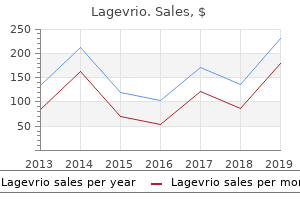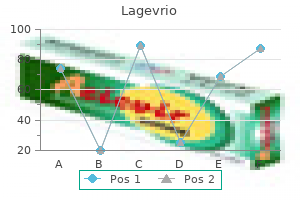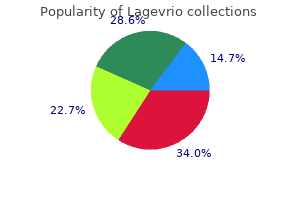

 5100 Springfield St. Suite 108, Dayton, Ohio 45431-1274
5100 Springfield St. Suite 108, Dayton, Ohio 45431-1274Lagevrio
"Order cheap lagevrio on-line, antiviral plot".
By: S. Iomar, M.B.A., M.B.B.S., M.H.S.
Assistant Professor, Philadelphia College of Osteopathic Medicine
Whole-Gland Salvage Cryoablation Cryoablation has been used for salvage therapy in patients in whom radiotherapy acute hiv infection symptoms pictures buy cheap lagevrio, radical prostatectomy hiv infection one night stand cheap lagevrio 200 mg with mastercard, or initial treatment with cryoablation has failed (Wenske et al hiv infection oral route discount 200 mg lagevrio fast delivery, 2013) and who have a negative metastatic workup (Ismail et al, 2007; Pisters et al, 2009). However, because of the necessary preservation of a thin rim of periurethral tissue for whole-gland ablation or from a more substantial spared portion of the gland with subtotal treatment, the likelihood of cure is limited. The most common complications were stress incontinence, infection, stricture, and erectile dysfunction (Rebillard et al, 2008). For instance, in a small series of patients treated with one commercially available device and no adjuvant hormone therapy (Koch et al, 2007), 10% of patients developed urinary retention after treatment, 20% were incontinent, and 5% had a rectal injury. The published reports from Europe are confounded by deficiencies in study design, inhomogeneous patient populations, undersampling of the prostate on biopsies, and frequent use of transurethral resection of the prostate and androgen ablation therapy. There was a 48% failure rate and one prostate cancer death; three severe strictures; two fistulae in salvage cases; and three cases that could not be performed because of rectal wall thickness. Some studies have reported excellent survival outcomes and minimal associated morbidity. Others have reported that the main potential advantage of salvage cryoablation may be that it could delay the need for hormone therapy (Ng et al, 2007). Five-year biochemical recurrence-free survival rates after salvage radical prostatectomy have been reported to be more favorable than for salvage cryoablation or brachytherapy. In summary, there is no substantial evidence to support cryoablation over the other therapeutic treatment options. Current cryoablation methods have a lower complication rate than earlier methods, but their effectiveness at achieving cancer control is not established. The reported results for salvage after radiotherapy are inferior to those reported for salvage radical prostatectomy. There remains concern about viable cancer cells near the warmed urethra, and, in general, the evidence for efficacy and safety in the literature is of limited quality. High-IntensityFocusedUltrasoundAblation Acoustic energy can be used with ultrasound focusing to generate heat within the prostate gland, thus ablating focal lesions or the entire gland. Within several seconds, a lesion develops with a sharp and predictable volume, leaving the surrounding tissue intact. Treatment is performed with use of general or spinal anesthesia and takes 1 to 4 hours, depending on the prostate volume, which should not exceed 40 mL. The rectal mucosa is cooled (Blana et al, 2004), and a limited transurethral resection of the prostate or a bladder neck incision is often performed at the beginning of the procedure to reduce the risk of postoperative urinary retention (Chaussy and Thuroff, 2003). Most patients require a urethral or suprapubic catheter for several days to weeks. Other potential complications are urinary fistula (2%), incontinence (up to 10%), and erectile dysfunction (20% to 60%), in addition to dysuria, urethral stricture, and perineal pain (Blana et al, 2004; Pickles et al, 2005). Re-treatment of patients is associated with an increase in urinary side effects, but sexual side effects are not significantly increased (Berge et al, 2014). The legitimate treatment options and their associated risks and potential benefits are discussed (Tables 112-1 and 112-2). Choice of therapy for an individual patient depends on the availability of high-quality delivery. Focal therapy has been proposed as an alternative to active surveillance or radical treatment for localized prostate cancer (Marien et al, 2014; van den Bos et al, 2014). However, because prostate cancer is usually multifocal, the fundamental rationale of focal therapy is questionable.

The second question still under debate is whether finasteride induces the development of high-grade or aggressive cancers jiangmin antivirus guard discount lagevrio 200mg. Androgen deprivation therapy is known to change the appearance of prostatic epithelium in a way that could bias interpretation (Civantos et al hiv infection through urethra purchase lagevrio in india, 1996) functional assessment of hiv infection questionnaire purchase 200 mg lagevrio otc. Thus the apparent increase in high-grade cancers in men treated with finasteride may be an artifact of these morphologic changes. Another potential explanation for the observed increase in high-grade tumors in the finasteride group is ascertainment bias. Indeed, the rate of upgrading from biopsy Gleason score 2-6 to pathologic Gleason score 7-10 among men treated by radical prostatectomy was higher in the placebo arm compared to the finasteride arm (Lucia et al, 2008). If finasteride induces high-grade cancers, one would expect a higher proportion of cancers with adverse features by biopsy criteria or at radical prostatectomy in the finasteride arm. Among Gleason 7-10 cancers, use of finasteride was associated with more favorable features of tumor extent on biopsy specimens compared to placebo, including percent of positive cores (34% vs. Among the 528 men who were treated by radical prostatectomy, no significant difference in the rate of extraprostatic extension, seminal vesicle invasion, or lymph node metastasis was observed between the two arms and there were fewer pathologic Gleason 7-10 cancers among men treated with finasteride versus placebo (89 vs. Given the protracted natural history of screening-detected cancers, it is unlikely that many of these men benefited from treatment in terms of preventing metastasis or death, though therapy is associated with significant impacts on quality of life and low but defined rates of treatment-related mortality. An effective primary prevention strategy would spare many men the burden of diagnosis and cure and reduce overdiagnosis associated with screening. When combined with aggressive early detection and treatment, chemoprevention also has the potential to reduce the mortality from prostate cancer, which remains the second leading cause of cancer deaths among men in the United States. A number of large, controlled, randomized trials that tested the ability of various agents to prevent prostate cancer have been reported in recent years and are reviewed here. The primary end point was the prevalence of prostate cancer during the 7 years of the study. However, a significant increase in the prevalence of biopsy Gleason score 7-10 cancers was observed in men receiving finasteride (280 [37%]) compared to placebo (237 [22%]), particularly for biopsy Gleason score 8-10 cancers (90 [12%] in the finasteride arm vs. Another observation was a marked effect of finasteride on the prevalence of biopsy Gleason score 2-6 tumors, no effect on the prevalence of biopsy Gleason score 7 tumors, and an increase in the prevalence of biopsy Gleason score 8-10 tumors. Accounting for the increased probability of upgrading to pathologic Gleason 7-10 cancer at radical prostatectomy among men with biopsy Gleason 2-6 cancers in the placebo arm, the investigators estimated the rate of true highgrade cancer to be 6% in the finasteride arm and 8. Using different methodology in an independent analysis, Pinsky and colleagues (2008) concurred that the rate of true high-grade disease may have been lower in the finasteride group compared with the placebo group. Analysis of cancer-specific mortality was limited because of the small number of men in whom cause of death was ascertained. The absence of important survival differences between treatment arms (and among those with cancer) suggests that the apparent higher incidence of higher-grade cancers in men treated with finasteride does not translate to important survival differences at 15 years. While finasteride did not appear to reduce overall mortality, it was associated with a 43% reduction in the risk of low-grade cancers. Furthermore, finasteride reduced the risk of prostatitis, acute urinary retention, and the need for surgical intervention. On the other hand, adverse effects more common with finasteride than placebo include impaired sexual or erectile function and endocrine effects. Compared to baseline scores, over the course of 7 years finasteride was associated with a slight increase in sexual dysfunction relative to placebo, equivalent to about half the effect of being 6. Dutasteride reduced the risk of prostate cancer over 4 years by 23% (858 in the placebo arm vs. There was no significant difference between groups in terms of cancer reduction on protocolindependent ("for-cause") biopsies (17% in both arms).
Discount 200 mg lagevrio free shipping. Acute HIV Infection.

There is indirect evidence to suggest that abnormalities in the prostatic vascular system produced by other disease states hiv infection statistics purchase lagevrio with american express. In the Olmsted County Study cohort highest hiv infection rate by country order lagevrio master card, in men with above-median levels of bioavailable testosterone antiviral medication for mono discount lagevrio online mastercard, the serum estradiol level correlated positively with prostate volume, even after adjusting for age (Roberts et al, 2004). Data on obesity, serum testosterone, estradiol, and prostate volume are conflicting (Zucchetto et al, 2005). From experimental studies with aromatase inhibitors, it appears that decreases in intraprostatic estrogen in animal models may lead to reduction in drug-induced stromal hyperplasia (Farnsworth, 1996, 1999). There are high levels of progesterone receptor in the normal and hyperplastic prostate. RegulationofProgrammedCellDeath Programmed cell death (apoptosis) is a physiologic mechanism crucial to the maintenance of normal glandular homeostasis (Kerr and Searle, 1973). Cellular condensation and fragmentation precede phagocytosis and degradation, during which the apoptotic cell is phagocytosed by neighboring cells and degraded by lysosomal enzymes. In the rat prostate, active cell death occurs naturally in the proximal segment of the prostatic ductal system in the presence of normal concentrations of plasma testosterone (Lee et al, 1990). Following castration, active cell death is increased in the luminal epithelial population as well as in the distal region of each duct. Tenniswood (1986) suggested that there is regional control over androgen action and epithelial response, with androgens providing a modulating influence over the local production of growth regulatory factors that varies in different parts of the gland. In the rat prostate, at least 25 different genes are induced following castration (Montpetit et al, 1986). Normal glandular homeostasis requires a balance between growth inhibitors and mitogens, which respectively restrain or induce cell proliferation but also prevent or modulate cell death. Further evidence of the importance of stromal-epithelial interactions in the prostate comes from the elegant developmental studies of Cunha and colleagues, which demonstrate the importance of embryonic prostatic mesenchyme in dictating differentiation of the urogenital sinus epithelium (Cunha et al, 1980, 1983, 2003; Cunha and Donjacour, 1987; Cunha, 1994, 1996). The process of new gland formation in the hyperplastic prostate suggests a "reawakening" of embryonic processes in which the underlying prostatic stroma induces epithelial cell development (McNeal, 1990). GrowthFactors Growth factors are small peptide molecules that stimulate, or in some cases inhibit, cell division and differentiation processes (Steiner, 1995; Lee and Peehl, 2004). Cells that respond to growth factors have on their surface receptors specific for that growth factor that in turn are linked to a variety of transmembrane and intracellular signaling mechanisms. The growth of canine prostate epithelium can be regulated by cellular interaction with the basement membrane and stromal cells. Isaacs and Coffey (1989), using a marker of canine prostatic epithelial cell function, demonstrated that epithelial cells grown on plastic quickly change their behavior. In contrast, if the cells are grown on prostatic collagen, they maintain their normal secretory capacity and cytoskeletal staining pattern and do not grow rapidly. Growth factors may also be important in modulating the phenotype of the prostate smooth muscle cell (Peehl and Sellers, 1998). There is mounting evidence of interdependence between growth factors, growth factor receptors, and the steroid hormone milieu of the prostate (Rennie et al, 1988; Lee and Peehl, 2004). However, further research is necessary to establish the role of growth factors in a disease process in which cellular proliferation is not obvious. Indirect evidence to support this view comes from studies of reconstituted mouse prostate (Yang et al, 1997). In addition, there is increasing evidence that sympathetic pathways may be important in the pathogenesis of the hyperplastic growth process (McVary et al, 1994, 2005). Thus T cells present in the local prostate environment were thought to be capable of secreting potent epithelial and stromal mitogens that promote stromal and glandular hyperplasia.

If local tumor recurrence does develop in patients with an orthotopic diversion early hiv symptoms sinus infection buy 200mg lagevrio free shipping, only a minority will develop problems related to the urinary diversion itself hiv symptoms immediately after infection 200 mg lagevrio for sale. Hautmann and colleagues evaluated this issue in 43 of 357 men who underwent radical cystectomy and ileal neobladder and developed local recurrence hiv early symptoms yeast infection cheap lagevrio 200mg. Most of them (84%) had advanced disease (stage pT3a or higher) on final pathology at the time of cystectomy. A total of 17 patients (43%) had concomitant distant metastasis at the time of diagnosis of the local recurrence. Local recurrence interfered with the upper urinary tract in 24 patients, the neobladder in 10 (23%), and the intestinal tract in 7; only 1 patient required removal of the neobladder because of an intestinal fistula. The authors concluded that most patients could anticipate normal neobladder function even in the presence of locally recurrent disease (Hautmann and Simon, 1999). Similarly, Tefilli and colleagues found that 1 of 11 patients with orthotopic diversion and local recurrence required conversion to an ileal conduit because of invasion of the neobladder (Tefilli et al, 1999). Questions were initially raised about whether a planned neobladder reconstruction would result in the surgeon inadvertently compromising the extent of dissection and thus the cancer cure rate. To evaluate this, Yossepowitch and colleagues retrospectively evaluated 214 patients who underwent radical cystectomy and orthotopic reconstruction and compared them with 269 patients treated with a cystectomy and ileal conduit diversion. Adjusting for pathologic stage, there was no cancer-specific survival difference between the two diversion groups. Patterns of relapse in 62 of the 214 patients (29%) with an orthotopic neobladder included local recurrence in 11%, distant recurrence in 9%, and combined local and distant recurrence in 18%. Only one patient in this series required the neobladder to be converted to an ileal conduit secondary to a relapse at the ureteroenteric anastomosis and expanding into the pouch. These authors also concluded that the low risk of local recurrence showed that in this cohort of patients the oncologic efficacy of the operation was not compromised (Yossepowitch et al, 2003). The relative importance of each of these factors in determining how to counsel an individual patient must be decided on a case-by-case basis. The patient and his or her family must have a realistic understanding of the pros and cons of each type of diversion before making a decision. There is a natural inclination for most patients to opt for an orthotopic reconstruction because it is the most "natural. An honest, informed discussion should take place, with the physician carefully explaining the various options along with the short- and long-term risks and benefits of each form of urinary diversion. It may also be helpful to have the patient talk with other patients who have undergone the various forms of urinary reconstruction. In general, patients with poor general health, the frail elderly, and patients with high surgical risks, difficult social circumstances, or poor cognitive function are probably best managed with an ileal conduit. Age Many authors have evaluated the success of continent diversion in elderly patients (Lance et al, 2001; Clark et al, 2005; Sogni et al, 2008). Although elderly patients undergoing orthotopic diversion may take longer to regain continence and have a higher rate of mild stress incontinence, ultimately older patients achieve daytime and nighttime continence rates similar to those for younger patients (Elmajian et al, 1996; Steven and Poulsen, 2000). The clear consensus is that chronologic age alone is not a contraindication for continent diversion and that options should be considered for each patient on the basis of other factors (Hautmann et al, 2013). A conduit may be easier for a caregiver to manage than an orthotopic diversion with the risk of incontinence and possible need for catheterization.